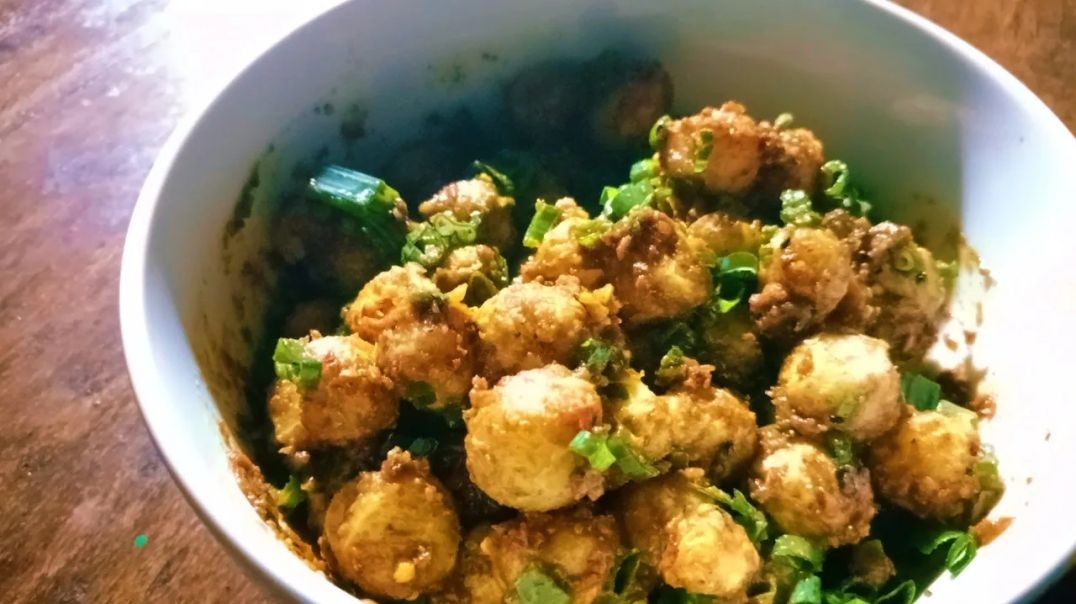The Origins of Sweet and Sour Chicken
Sweet and sour chicken, like many dishes in Chinese cuisine, is deeply rooted in Chinese culinary traditions. The dish is thought to have originated in the Cantonese region of China, which is known for its emphasis on fresh ingredients and a delicate balance of flavors. The concept of combining sweet and sour elements in a dish dates back centuries in Chinese cooking, with variations found in many regional cuisines.
Though the exact history of sweet and sour chicken is unclear, the dish has evolved over time, particularly through the influence of Western Chinese food adaptations. In the West, sweet and sour chicken became a popular menu item, often served in a sauce that is both sticky and tangy, with a crisp coating on the chicken. Over the years, it has become a universally loved dish, known for its irresistible combination of crispy fried chicken and a glossy, vibrant sauce.
The Sweet and Sour Flavor Profile
The magic of sweet and sour chicken lies in its harmonious flavor profile. The dish typically features pieces of chicken that are battered and deep-fried until crispy, creating a crunchy exterior that contrasts beautifully with the sticky, flavorful sauce. The sauce itself is a perfect balance of sweet and sour elements, often made from a combination of vinegar, sugar, ketchup, and sometimes pineapple juice.
The vinegar provides the dish with its tartness, while the sugar and ketchup bring in the sweetness and depth. Many recipes also include a hint of soy sauce, which adds a savory umami note to the sauce. This unique balance of flavors makes the dish irresistible, appealing to all palates, whether you crave sweetness, tanginess, or saltiness.
Ingredients and Preparation
The preparation of sweet and sour chicken typically begins with marinating the chicken in a mixture of soy sauce, cornstarch, and other seasonings to ensure that the chicken stays tender and flavorful. The chicken is then coated in a light batter, which helps to create the crispy exterior when deep-fried.
While the chicken is frying, the sauce is prepared by combining vinegar, sugar, ketchup, and other ingredients in a wok or pan. Some recipes add pineapple chunks or bell peppers, which add both flavor and color to the dish. Once the chicken is fried to a golden crisp, it is tossed in the sweet and sour sauce, ensuring every piece is coated in the glossy, flavorful mixture.
Serving Suggestions
Sweet and sour chicken is typically served with steamed rice, which helps to balance the strong flavors of the dish and soak up the delicious sauce. The vibrant colors and rich textures of the dish also make it an attractive choice for festive meals and dinner parties. It pairs beautifully with other Chinese dishes like fried rice, egg rolls, or a simple vegetable stir-fry.
In addition to traditional sweet and sour chicken, there are many variations of the dish. Some versions feature pineapple or onions for an extra burst of sweetness and crunch, while others might swap the chicken for shrimp or tofu to suit different dietary preferences.
Conclusion
Sweet and sour chicken is a quintessential Chinese dish that perfectly embodies the harmony of flavors that make Chinese cuisine so appealing. With its crispy chicken, tangy sauce, and burst of sweetness, it's a dish that continues to delight taste buds across the globe. Whether enjoyed in a bustling Chinese restaurant or made at home, sweet and sour chicken is a versatile and satisfying dish that never goes out of style.
Its blend of savory, sweet, and sour elements makes it a perfect choice for any occasion—whether you're craving comfort food or serving up something special for friends and family. By exploring the balance of flavors and textures in sweet and sour chicken, we can appreciate why this dish remains one of the most beloved in Chinese culinary tradition.










